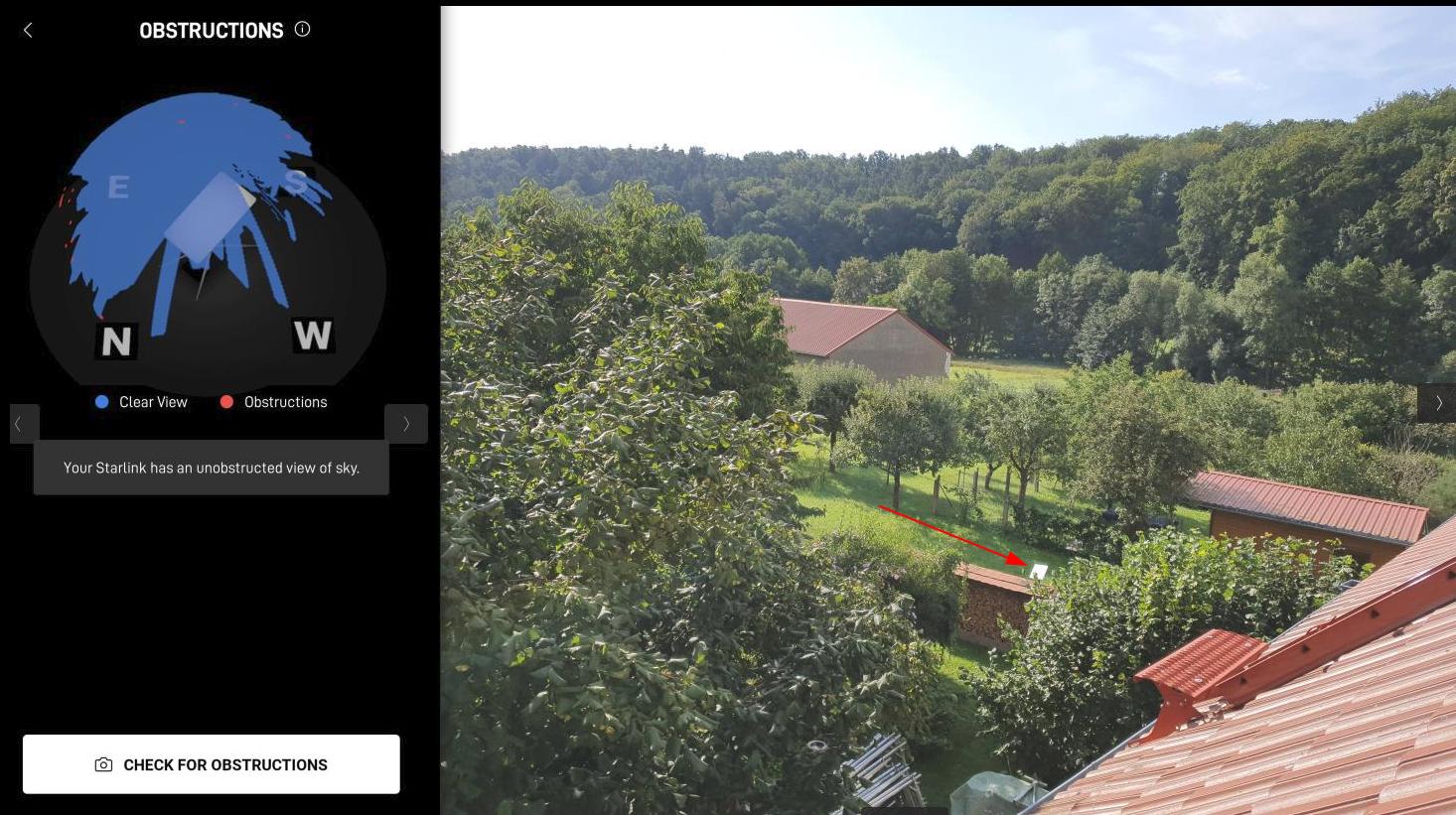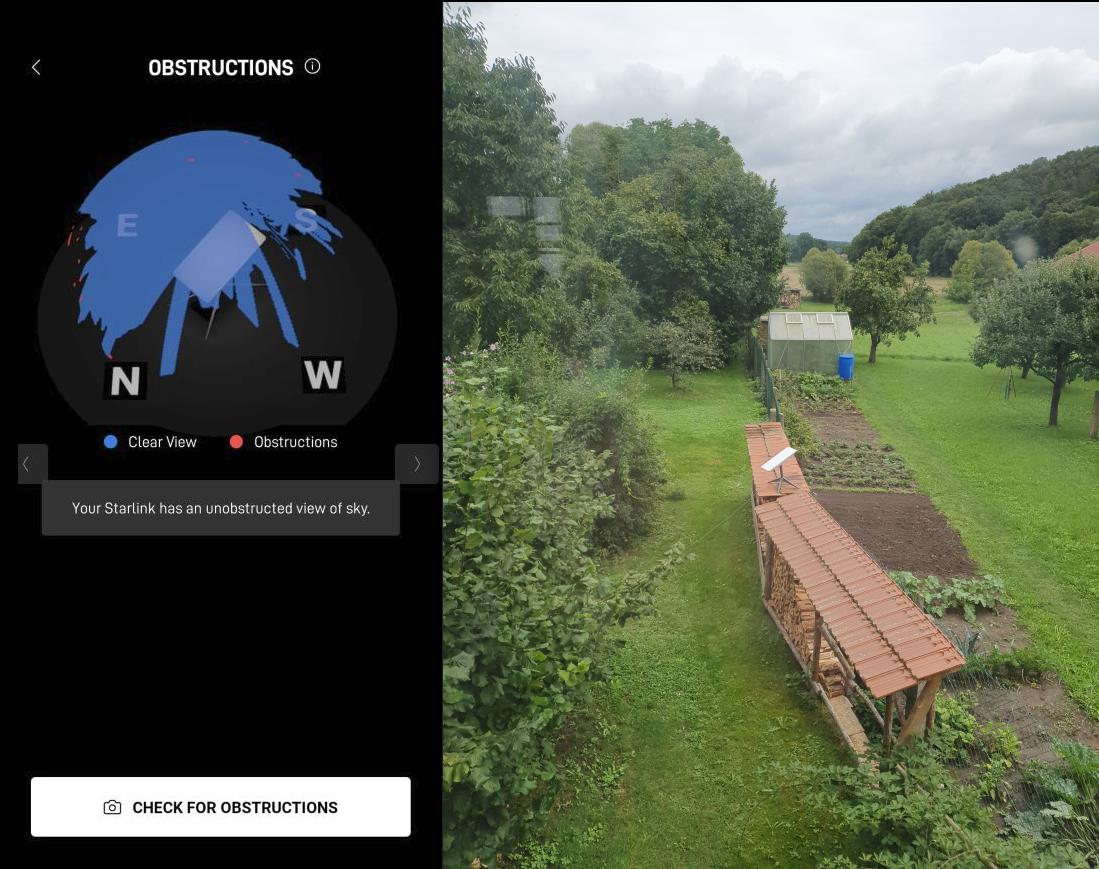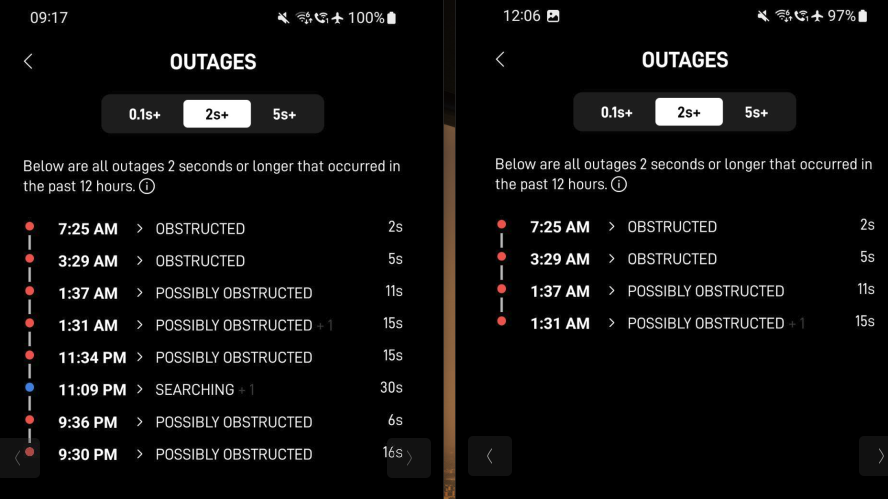
And further I went into ‘terra incognita’ with Starlink, this time to a place which was quite challenging in terms of terrain. But again, looking at the bright side of it, it was the first time I had to experiment for a while to find a good spot to place ‘Dishy’.
As you can see in the picture above, with trees and houses in 3 out of 4 directions, I ended up putting Dishy on a little stand with orange shingles on top that protected firewood from getting wet. The obstruction chart on the left side of the image is turned in the direction from which I took the image and shows the obstructions quite clearly. To the west, houses block a good part of the sky while towards the north-east, large trees are not helping much. Fortunately, the the south-east and south was mostly free of obstacles. However, the the overall location was in a little valley, so the treeline rises at quite a bit of an angle in the south.
The following image shows the same location directly from the west. The treeline to the north, i.e. on the left, started a few meters away, so it was still less than an ideal location. At first, I placed Dishy on the ground at various locations in a garden full of trees, including directly in the front of the wood protection stand. This worked for some time, but every few minutes, there were outages between 10 and 20 seconds. I then put the dish on a table in front of the wood protection stand to raise the installation about a meter, but that didn’t help much either. But finally, on the top of the wood protection stand, all was well! In other words: 1 meter in height can make all the difference!

The next side by side screenshots below give an overview of the outages during 15 hours at this location. The screenshots were taken at different times and the upper 4 entries are the same on the left and right. The interesting point to show here is that starting from 7 o’clock in the morning, there wasn’t a single outage until noon when I made the second screenshot. So perhaps not perfect, but the location looked far more unsuitable than this.

Overall I would say that in Germany, where Starlink satellites cover the complete sky, having an unobstructed view of at least half the sky ensures few to no outages. Anything less and things seem to deteriorate quickly, as I was going from many short outages of a few seconds every few minutes to an almost perfect setup by raising the antenna just one meter.